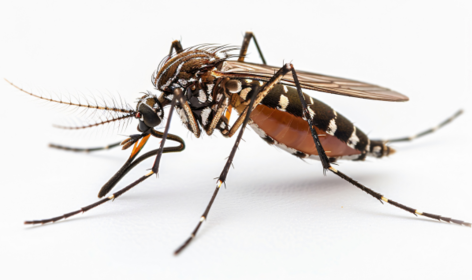Quick help for heart attacks: how chest pain units save lives
Cardiology intensive care and emergency medicine(20.10.2025) Sudden chest pain - many people think of stress or tension. But sometimes a heart attack or another life-threatening cause is behind it. In specialized emergency units, the so-called Chest Pain Units, every minute is used to help.
Around 300,000 people die from cardiovascular diseases in Germany every year - many of them completely unexpectedly. Rapid and targeted diagnosis is therefore often crucial. In so-called chest pain units, patients with acute chest pain and suspected heart attacks are examined immediately and with a great deal of combined experience. And according to clear medical guidelines.

Every minute counts in the Chest Pain Unit - state-of-the-art diagnostics and rapid treatment can save lives. ©Drazen Zisic/freepik
Targeted treatment immediately after admission
"In the Chest Pain Unit, we treat patients with acute chest pain very quickly and in a structured manner - from the moment they are admitted," explains Dr. Roland Schmitz, Managing Senior Physician for Cardiological Intensive Care and Emergency Medicine at the Department of Cardiology and Angiology at the Medical Center - University of Freiburg.
Initial diagnostics saves valuable time
The patient is immediately connected to an ECG - so the heart is monitored around the clock. The structured examination begins at the same time: blood samples, ultrasound at the bedside and a detailed discussion of the patient's medical history. "With ECG and ultrasound, we can often point the suspicion in the right direction in the first few minutes at the bedside and then initiate further targeted examinations to reliably prove - or rule out - whether there is a heart attack, pulmonary embolism or a dangerous injury to the aorta, for example," explains Schmitz. This initial diagnosis saves valuable time.
CT imaging for unclear cases
If the cause remains unclear, a computer tomography (CT) scan with contrast medium is often performed. This allows serious illnesses such as a pneumothorax (air between the lungs and chest wall), an aortic dissection (tear in the main artery) or a pulmonary embolism to be ruled out with certainty. "We can even use the contrast agent to visualize the coronary arteries," says Schmitz. If a severe constriction is discovered here, every minute counts to prevent an impending heart attack.
Cardiac catheterization: Diagnosis and treatment in one step
If the ECG shows a heart attack or the other examinations mentioned provide evidence of a narrowing of the coronary arteries, a cardiac catheterization is performed. Under local anesthesia, a thin tube is passed through the "pulse artery" at the wrist or, more rarely, from the groin to the heart. The coronary arteries can be precisely visualized using X-ray contrast medium and fluoroscopy. If a constriction is found, it can be treated directly - for example with a so-called balloon dilatation and the insertion of a stent, i.e. a small wire scaffold that keeps the vessel open.
Well informed and safe further treatment
Patients are informed about the examinations in advance. Once all examinations have been completed, the results are discussed in an understandable way and the next steps and medication are explained. If acute or threatening illnesses can be safely ruled out, discharge is often possible on the same day, and after cardiac catheterization procedures often the very next day. "Further care is then provided by the local GPsor cardiologists in close consultation with us," explains Schmitz.
Conclusion: Chest pain units are specially designed to quickly initiate the right steps in the event of chest pain, for example to rule out a heart attack. Thanks to standardized procedures and modern technology, life-saving treatment can often be provided within a very short time - in line with the motto: it is better to act once too often than once too little.
On the YouTube channel of the Medical Center - University of Freiburg you will find an video explaining the Chest Pain Unit
Quickly explained: When to see a physician for chest pain
- Sudden pain in the chest that lasts longer than five minutes
- Pain that radiates to the arms, back, jaw or stomach
- Accompanying symptoms such as shortness of breath, nausea or anxiety
- If unsure: Always call 112!
More interesting articles
Medical Center - University of Freiburg
Central InformationPhone: 0761 270-0
info@uniklinik-freiburg.de
Corporate Communications
Breisacher Straße 15379110 Freiburg
Phone: 0761 270-84830
kommunikation@uniklinik-freiburg.de



